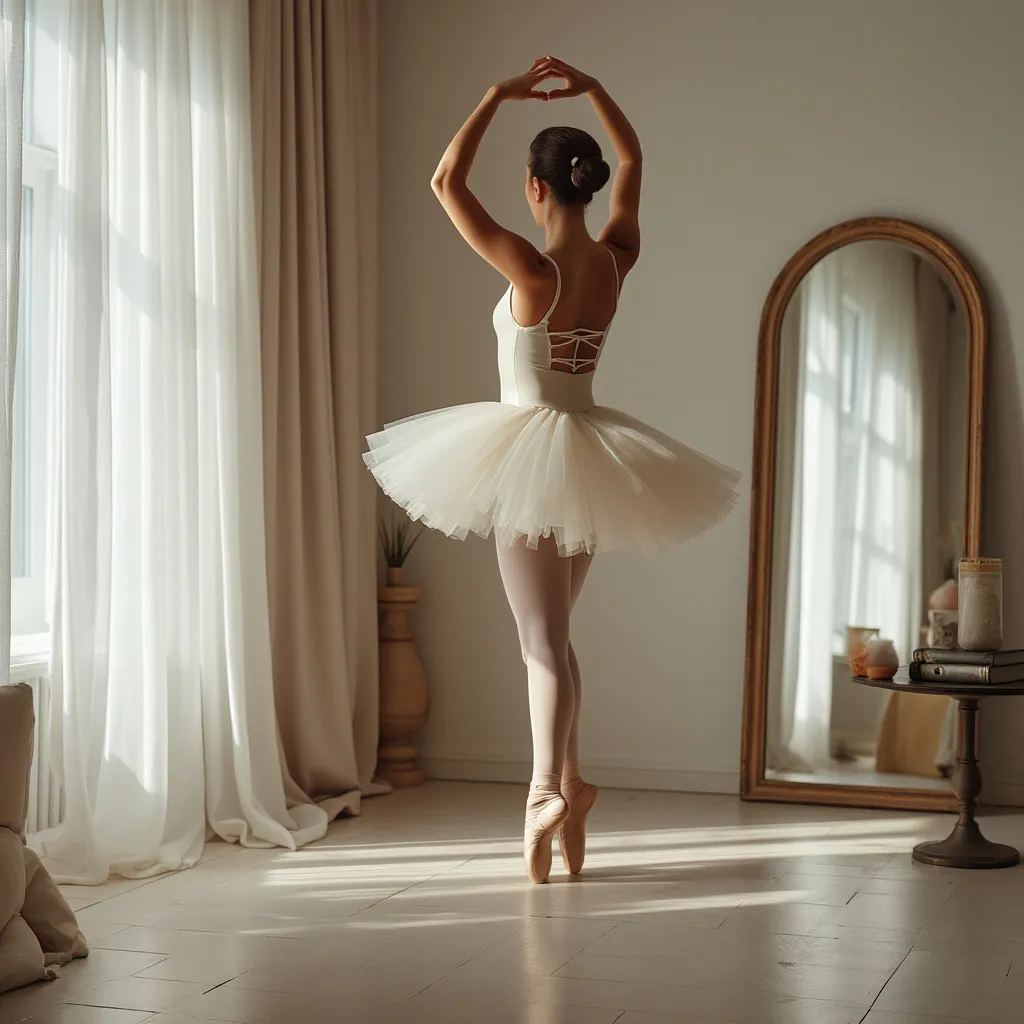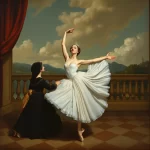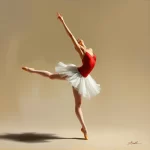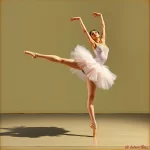Influential Ballet Choreographers: From Petipa to Balanchine

Introduction
Ballet, a highly technical form of dance with its roots in the Italian Renaissance, has evolved significantly over the centuries. This evolution has been shaped by numerous influential choreographers who have left an indelible mark on the art form. From the classical grandeur of Marius Petipa to the neoclassical innovations of George Balanchine, these visionaries have expanded the boundaries of ballet, creating works that continue to inspire and captivate audiences worldwide. This article delves into the lives and contributions of some of the most influential ballet choreographers, exploring their unique styles and lasting legacies.
Marius Petipa: The Architect of Classical Ballet
Early Life and Career
Marius Petipa, born in 1818 in Marseille, France, is often regarded as the father of classical ballet. His early training was under the guidance of his father, Jean Petipa, a renowned ballet master. Marius’s career began in France, but it was his move to Russia in 1847 that marked the beginning of his monumental influence on ballet.
Contributions to Ballet
Petipa’s tenure as the principal choreographer of the Imperial Ballet in St. Petersburg saw the creation of some of the most iconic ballets in history. His works, such as Swan Lake, The Sleeping Beauty, and The Nutcracker (in collaboration with Lev Ivanov), are cornerstones of the classical ballet repertoire. Petipa’s choreography is characterized by its intricate patterns, grand pas de deux, and elaborate staging, which have set the standard for classical ballet.
Legacy
Petipa’s influence extends beyond his choreography. He played a crucial role in developing the structure of the classical ballet, including the use of mime and the integration of character dances. His works continue to be performed by ballet companies around the world, ensuring that his legacy endures.
Michel Fokine: The Pioneer of Modern Ballet
Early Life and Career
Michel Fokine, born in 1880 in St. Petersburg, Russia, was a revolutionary figure in ballet. Trained at the Imperial Ballet School, Fokine was a prodigious talent who quickly rose through the ranks to become a principal dancer. However, it was his work as a choreographer that truly set him apart.
Innovations in Ballet
Fokine sought to break away from the rigid conventions of classical ballet, advocating for a more expressive and naturalistic approach. His works, such as Les Sylphides, Firebird, and Petrushka, emphasized dramatic expression and thematic coherence. Fokine’s choreography often integrated elements of folk dance and modern dance, creating a more fluid and dynamic style.
Legacy
Fokine’s influence on ballet is profound. He paved the way for future choreographers to explore new forms of expression and narrative in dance. His emphasis on the unity of music, movement, and design has become a guiding principle for modern ballet.
Vaslav Nijinsky: The Enigmatic Genius
Early Life and Career
Vaslav Nijinsky, born in 1889 in Kiev, Ukraine, was one of the most celebrated dancers of his time. Trained at the Imperial Ballet School, Nijinsky’s extraordinary talent and charisma made him a star. However, it was his work as a choreographer that cemented his place in ballet history.
Controversial Works
Nijinsky’s choreography was groundbreaking and often controversial. His works, such as L’Après-midi d’un Faune and Le Sacre du Printemps, challenged traditional notions of ballet with their unconventional movements and bold themes. Le Sacre du Printemps, in particular, caused a scandal at its premiere in 1913 due to its avant-garde choreography and Igor Stravinsky’s dissonant score.
Legacy
Despite his relatively short career, Nijinsky’s impact on ballet is immense. His innovative approach to movement and storytelling has inspired generations of choreographers. His works continue to be studied and performed, highlighting his enduring influence on the art form.
George Balanchine: The Master of Neoclassical Ballet
Early Life and Career
George Balanchine, born in 1904 in St. Petersburg, Russia, is widely regarded as one of the greatest choreographers of the 20th century. Trained at the Imperial Ballet School, Balanchine’s early career was marked by his work with the Ballets Russes, where he collaborated with some of the most influential artists of the time.
Neoclassical Innovations
Balanchine’s move to the United States in 1933 marked the beginning of a new era in ballet. As the co-founder of the New York City Ballet, Balanchine developed a distinctive neoclassical style characterized by its emphasis on form, speed, and musicality. His works, such as Serenade, Agon, and Jewels, stripped away the elaborate costumes and sets of classical ballet, focusing instead on the purity of movement.
Legacy
Balanchine’s influence on ballet is unparalleled. He transformed the American ballet scene and established a new standard for excellence in dance. His works continue to be performed by ballet companies worldwide, and his approach to choreography has shaped the development of contemporary ballet.
Frederick Ashton: The Poet of Ballet
Early Life and Career
Frederick Ashton, born in 1904 in Guayaquil, Ecuador, was a pivotal figure in British ballet. Trained under the guidance of Léonide Massine and Marie Rambert, Ashton quickly established himself as a talented choreographer.
Signature Works
Ashton’s choreography is known for its lyrical beauty and emotional depth. His works, such as Cinderella, La Fille mal gardée, and Symphonic Variations, are celebrated for their elegance and musicality. Ashton had a unique ability to capture the nuances of human emotion through dance, creating works that resonate deeply with audiences.
Legacy
Ashton’s contributions to ballet are immense. He played a crucial role in establishing the Royal Ballet as one of the world’s leading ballet companies. His works continue to be performed and cherished, ensuring that his legacy endures.
Jerome Robbins: The Versatile Visionary
Early Life and Career
Jerome Robbins, born in 1918 in New York City, was a versatile choreographer whose work spanned both ballet and Broadway. Trained at the New York City Ballet, Robbins quickly made a name for himself with his innovative choreography.
Broadway and Ballet
Robbins’s ability to seamlessly blend ballet with other dance forms set him apart. His works, such as Fancy Free, West Side Story, and Dances at a Gathering, showcase his versatility and creativity. Robbins’s choreography is characterized by its dynamic energy and theatrical flair, making him a beloved figure in both the ballet and Broadway worlds.
Legacy
Robbins’s influence on dance is profound. His works continue to be performed by ballet companies and theater productions worldwide. His ability to bridge the gap between ballet and popular culture has left a lasting impact on the art form.
FAQ
What is the significance of Marius Petipa in ballet history?
Marius Petipa is often regarded as the father of classical ballet. His works, such as Swan Lake, The Sleeping Beauty, and The Nutcracker, are cornerstones of the classical ballet repertoire. Petipa’s choreography set the standard for classical ballet with its intricate patterns, grand pas de deux, and elaborate staging.
How did Michel Fokine revolutionize ballet?
Michel Fokine sought to break away from the rigid conventions of classical ballet, advocating for a more expressive and naturalistic approach. His works emphasized dramatic expression and thematic coherence, integrating elements of folk dance and modern dance. Fokine’s innovations paved the way for future choreographers to explore new forms of expression in ballet.
What made Vaslav Nijinsky’s choreography controversial?
Vaslav Nijinsky’s choreography was groundbreaking and often controversial due to its unconventional movements and bold themes. Works like L’Après-midi d’un Faune and Le Sacre du Printemps challenged traditional notions of ballet, with Le Sacre du Printemps causing a scandal at its premiere due to its avant-garde choreography and dissonant score.
What is George Balanchine’s contribution to ballet?
George Balanchine is widely regarded as one of the greatest choreographers of the 20th century. He developed a distinctive neoclassical style characterized by its emphasis on form, speed, and musicality. Balanchine transformed the American ballet scene and established a new standard for excellence in dance, with his works continuing to be performed worldwide.
How did Frederick Ashton influence British ballet?
Frederick Ashton played a crucial role in establishing the Royal Ballet as one of the world’s leading ballet companies. His choreography is known for its lyrical beauty and emotional depth, capturing the nuances of human emotion through dance. Ashton’s works continue to be performed and cherished, ensuring his lasting legacy.
What sets Jerome Robbins apart as a choreographer?
Jerome Robbins’s versatility and ability to seamlessly blend ballet with other dance forms set him apart. His works, such as Fancy Free, West Side Story, and Dances at a Gathering, showcase his dynamic energy and theatrical flair. Robbins’s ability to bridge the gap between ballet and popular culture has left a lasting impact on the art form.
Conclusion
The world of ballet has been profoundly shaped by the contributions of its most influential choreographers. From Marius Petipa’s classical masterpieces to George Balanchine’s neoclassical innovations, these visionaries have expanded the boundaries of ballet, creating works that continue to inspire and captivate audiences worldwide. Their unique styles and lasting legacies have ensured that ballet remains a vibrant and evolving art form, cherished by generations of dancers and audiences alike.





